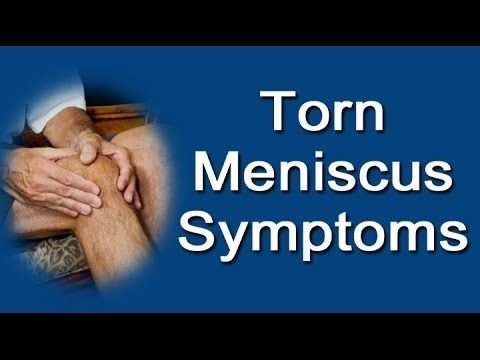A torn meniscus is one of the most common knee injuries, particularly for athletes, fitness enthusiasts, and older adults. The meniscus is a C-shaped cartilage in your knee that acts as a shock absorber, cushioning the joint and helping to distribute weight. When this cartilage is torn, it can cause pain, swelling, and difficulty in moving the knee. Early diagnosis is crucial to prevent further complications, and a proper torn meniscus symptoms test can help determine if you’re dealing with this injury.
In this post, we’ll break down the symptoms of a torn meniscus, explain various tests used to diagnose it, and explore treatment options for those suffering from this injury.
Understanding a Torn Meniscus
The meniscus is a critical part of knee anatomy, as it helps with stabilizing and supporting the knee joint. Each knee has two menisci—one on the inside (medial meniscus) and one on the outside (lateral meniscus). A torn meniscus usually occurs when the knee is twisted or subjected to a sudden, awkward movement. Sports that involve pivoting or sudden direction changes, such as basketball, soccer, and tennis, are particularly high-risk for meniscus tears.
While athletes are most prone to this injury, it can also occur due to aging. Over time, the cartilage in the knee becomes weaker and less flexible, making it more vulnerable to tears during everyday activities like kneeling, squatting, or lifting heavy objects.
Common Symptoms of a Torn Meniscus
Recognizing the symptoms of a torn meniscus is the first step in seeking proper treatment. The symptoms can range from mild discomfort to severe pain, depending on the extent of the tear. If you suspect you might have this injury, look out for the following symptoms:
- Pain in the Knee: Pain is one of the earliest and most noticeable symptoms of a torn meniscus. The pain is often localized on either the inside or outside of the knee, depending on whether the medial or lateral meniscus is torn. The pain may worsen when twisting or rotating the knee.
- Swelling: Swelling typically occurs within a few hours after the injury. In some cases, the swelling may not appear immediately but will develop over the next day or two. Swelling occurs due to the irritation and inflammation in the knee joint caused by the torn cartilage.
- Stiffness and Limited Range of Motion: A torn meniscus can lead to stiffness in the knee joint, making it difficult to fully straighten or bend the knee. Many individuals with a torn meniscus describe feeling like their knee is “locked” or “stuck.”
- Popping Sensation: Some individuals report hearing or feeling a popping sound at the moment of injury. This sensation occurs when the meniscus is torn and the cartilage moves abnormally within the knee joint.
- Instability: A torn meniscus can make the knee feel unstable or weak. Individuals may feel like the knee is going to give out when walking, standing, or performing other physical activities.
- Clicking or Locking: A clicking or locking sensation is common in individuals with a torn meniscus. This happens when the torn cartilage interferes with the smooth movement of the knee joint, causing it to catch or lock during motion.
Torn Meniscus Symptoms Test: Methods for Diagnosis
If you are experiencing any of the symptoms mentioned above, it’s important to undergo a proper diagnosis to confirm whether you have a torn meniscus. Medical professionals typically use several tests to diagnose the condition accurately. A torn meniscus symptoms test involves both physical examination and imaging techniques to assess the extent of the injury.
Here are the common tests used to diagnose a torn meniscus:
1. McMurray Test
The McMurray test is one of the most widely used physical exams to assess for a torn meniscus. During this test, the doctor will move your knee in specific ways to check for pain, clicking, or locking, which can indicate a meniscus tear.
- How it works: The patient lies on their back while the doctor holds the heel and bends the knee. The doctor then rotates the knee internally and externally while extending the leg. If a clicking or locking sensation is felt during this movement, it suggests a torn meniscus.
The McMurray test is considered reliable, but additional tests may be needed to confirm the diagnosis.
2. Apley’s Compression Test
Another common torn meniscus symptoms test is Apley’s compression test. This test is used to determine whether the pain in the knee is due to a meniscal injury or another issue like a ligament tear.
- How it works: The patient lies face down, with the knee bent at a 90-degree angle. The doctor applies downward pressure to the heel while rotating the lower leg. If pain occurs during this movement, it is a sign of a possible meniscus tear.
Apley’s compression test is useful for distinguishing between different types of knee injuries and narrowing down the cause of pain.
3. Thessaly Test
The Thessaly test is a dynamic test that mimics the motions that commonly cause meniscus tears. It’s considered highly effective for detecting meniscus injuries.
- How it works: The patient stands on one leg while holding onto the doctor or a stable surface for balance. The patient then bends the knee slightly and twists the body back and forth. Pain or locking during this movement is a sign of a torn meniscus.
The Thessaly test is particularly helpful in identifying meniscus tears in active individuals, as it replicates the types of movements that can cause this injury.
Conclusion
A torn meniscus is a painful and limiting injury, but with the right diagnosis and treatment, it is possible to recover and regain full use of the knee. Recognizing the symptoms early and undergoing a torn meniscus symptoms test can help confirm the injury and guide the appropriate treatment plan.
Tests such as the McMurray test, Apley’s compression test, Thessaly test, and MRI scans are vital in diagnosing the severity of a torn meniscus. Treatment options range from conservative methods like rest and physical therapy to more invasive procedures like surgery.
If you suspect you’ve torn your meniscus, don’t ignore the symptoms. Early diagnosis and treatment can prevent further damage and ensure a faster, more complete recovery.














